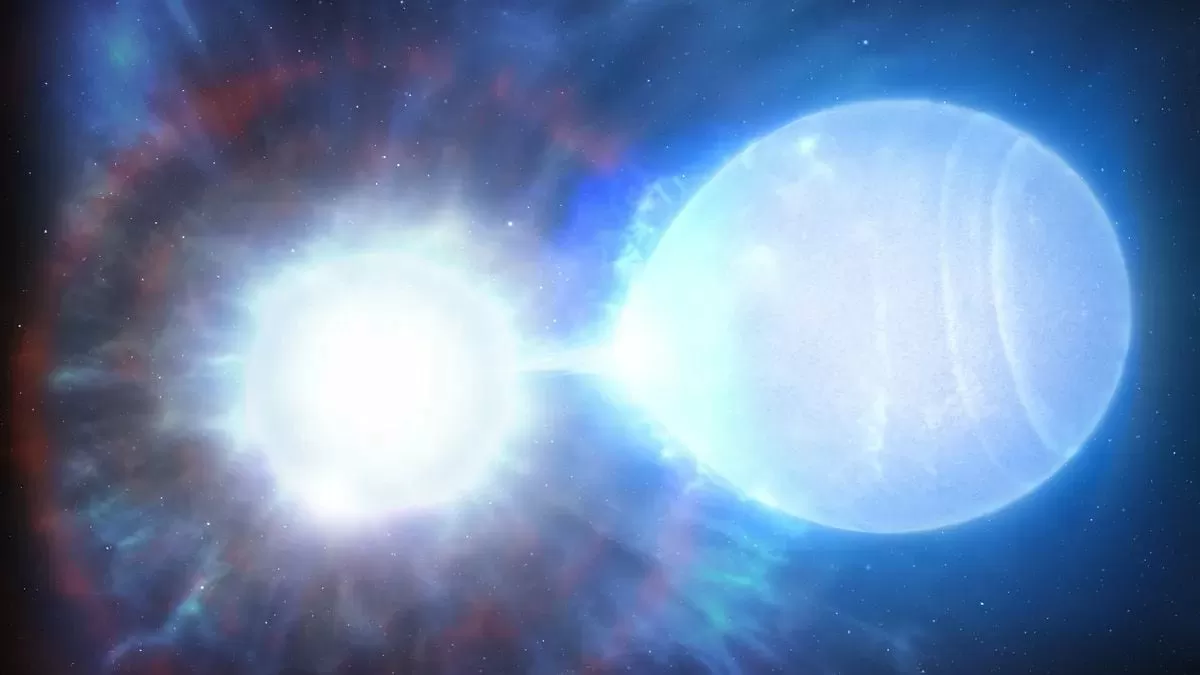Astronomers have made an incredible discovery that has the potential to change our understanding of the universe. A pair of white dwarf stars, located about 150 light-years from Earth, have been found to be on a collision course. This unprecedented event is set to produce a Type 1a supernova in approximately 23 billion years, making it the first of its kind to be identified near our region of the galaxy.
The two stars, with a combined mass of 1.56 solar masses, are slowly spiraling towards each other in an intricate dance of gravity and force. This mesmerizing phenomenon has been observed by a team of astronomers using the European Southern Observatory’s Very Large Telescope (VLT) in Chile.
White dwarf stars are the remnants of sun-like stars that have reached the end of their lives. They are incredibly dense, with a mass comparable to that of our Sun but squeezed into a sphere the size of Earth. When two white dwarfs come close enough, their gravitational pull becomes too strong, causing them to merge and release an enormous amount of energy in the form of a supernova.
This particular pair of white dwarfs is unique in that they have a combined mass that is very close to the critical limit for a Type 1a supernova. This means that when they collide, they will produce a spectacular explosion that can outshine an entire galaxy for a brief period. This event will not only be a visual spectacle but also a crucial opportunity for scientists to study the inner workings of a Type 1a supernova.
One of the most exciting aspects of this discovery is its proximity to Earth. Being only 150 light-years away, it is considered to be in our cosmic backyard. This proximity will allow astronomers to study the event in great detail, providing valuable insights into the mechanisms behind a Type 1a supernova.
The team of astronomers, led by Dr. David Jones from the Institute of Astronomy at the University of Cambridge, used the VLT’s powerful instruments to observe the stars’ movements and measure their masses. They were able to determine that the two stars are orbiting each other every 2.5 hours, with their distance decreasing by 2 mm every year. This may seem like a tiny amount, but in astronomical terms, it is a significant decrease, indicating that the stars are indeed on a collision course.
The discovery of this white dwarf pair is a significant milestone in our understanding of the universe. It confirms the long-held theory that Type 1a supernovae are the result of two white dwarfs merging. It also provides a rare opportunity for scientists to study the process in real-time, which can help refine our models and theories.
Moreover, this discovery has implications for our understanding of the evolution of galaxies. Type 1a supernovae are crucial in determining the expansion rate of the universe, which in turn helps us understand the composition and age of the universe. By studying this event, we can gain a better understanding of how galaxies, including our own Milky Way, have evolved over billions of years.
The team of astronomers is now eagerly waiting for the collision to occur, which is estimated to happen in approximately 23 billion years. While this may seem like an incredibly long time, in the grand scheme of the universe, it is just a blink of an eye. The fact that we have identified this event so close to our galaxy is a testament to the advancements in technology and our understanding of the cosmos.
This discovery is a reminder of how vast and mysterious our universe is and how much we still have to learn. It is a testament to the relentless curiosity and dedication of astronomers who continue to push the boundaries of our knowledge. As we eagerly await the collision of these two white dwarfs, we can only imagine the wonders and mysteries that await us in the vast expanse of space.








